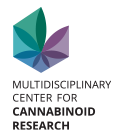Esther Shohami Ph.D. Raphael Mechoulam Ph.D.
Traumatic brain injury represents the leading cause of death in young individuals. It triggers the accumulation of harmful compounds, leading to secondary damage, yet protective mechanisms are also set in motion. The endocannabinoid system consists of brain components, such as anandamide and 2-arachidonoyl-glycerol (2-AG) – named endocannabinoids (discovered by us previously, see references 1 and 2). – as well as receptors to these endocannabinoids, named CB1 and CB2, and various enzymes involved in the syntheses and metabolism of these endocannabinoids. There is a large body of evidence showing that endocannabinoid levels – at least that of 2-AG - are markedly increased in response to pathogenic events. This fact, as well as numerous studies on experimental models of brain toxicity, neuro-inflammation and trauma, support the notion that endocannabinoids are part of the compensatory and repair mechanisms of the brain.
We have reported that one of the endocannabinoids, 2-AG, is directly involved in brain protection after traumatic brain injury (ref 3, 4, 5 ). We found (ref 3) that the levels of 2-AG are enhanced after the injury, and that this is a protective reaction. Namely, synthetic 2-AG administered to mice after TBI, improved functional outcome, reduced edema and lesion volume, as well as neuronal cell death (ref 3-5).
Recently we discovered that at least additional eCB-like compounds (such as arachidonoyl serine and palmitoyl serine), likewise confer brain protection (ref 6, 7, 8). For a more detailed scientific review see ref 9. Based on our, and others', data we believe that the endocannabinoid system plays a central role as a self-neuroprotective mechanism and has significant potential as a basis for the development of novel therapeutic modality for traumatic brain injury. We plan to further explore the potential of novel eCB, eCB-like and synthetic analogs (prepared by Prof. Mechoulam) on recovery after TBI. Using our well-established TBI mouse model we will further explore two research avenues: 1. Novel synthetic molecules will be tested for their potential therapeutic capacities to improve function after TBI. 2. The mechanism(s) (cellular/molecular) by which this super-family of molecules exerts its beneficial effects (see abstract below).
References:
- W.A. Devane, L. Hanus, A. Breuer, R.G. Pertwee, L.A. Stevenson, G. Griffin, D. Gibson, A. Mandelbaum, A. Etinger and R. Mechoulam. Isolation and structure of a brain constituent that binds to the cannabinoid receptor. Science 258, 1946-1949 (1992).
- R. Mechoulam et al., Identification of an endogenous 2-monoglyceride, present in canine gut, that binds to cannabinoid receptors. Biochem. Pharmacol. 50, 83-90 (1995).
- D. Panikashvili, C. Simeonidou, S. Ben-Shabat, L. Hanus, A. Breuer,R. Mechoulam and E. Shohami. An endogenous cannabinoid (2-AG) is neuroprotective after brain injury. Nature 413, 527-531 (2001). 4.
- Panikashvili D, Mechoulam R, Beni SM, Alexandrovich A, Shohami E. CB(1) cannabinoid receptors are involved in neuroprotection via NF-kappaB inhibition.. J Cereb Blood Flow Metabol 25, 477-484, 2005.
- Panikashvili, D, Shein NA, Mechoulam R, Trembovler V, Kohen R, Alexandrovich A, and Shohami E. The endocannabinoid 2-AG protects the blood brain barrier after closed head injury and inhibits expression of proinflammatory cytokines. Neurobiology of Disease, 22, 257-264, 2006.
- A. Cohen-Yeshurun, V. Trembovler, A. Alexandrovich, E. Ryberg, P. J. Greasley, R. Mechoulam, E. Shohami, R. R. Leker. N-Arachidonoyl-L-serine is neuroprotective after traumatic brain injury by reducing apoptosis. J. Cerebral Blood Flow & Metabolism 31, 1768-1777 (2011). 7.
- A. Cohen-Yeshurun, D.Willner, V. Trembovler, A. Alexandrovitch, R. Mechoulam, E. Shohami, R.R.Leker. N-arachidonoyl-L-serine (AraS) possesses proneurogenic properties in vitro and in vivo after traumatic brain injury. J. Cereb Blood Flow Metab. 33, 1242-1250 (2013).
- A. Mann. Endocannabinoid-like entities as neuroprotectants after traumatic brain injury. M.Sc. Thesis (supervisors E. Shohami and R. Mechoulam). 2014.
- E. Shohami, A. Cohen-Yeshurun, L. Magid, M. Elgali, R. Mechoulam. Endocannabinoids and traumatic brain injury. Br. J. Pharmacol. 163, 1402-1410 (2011).
